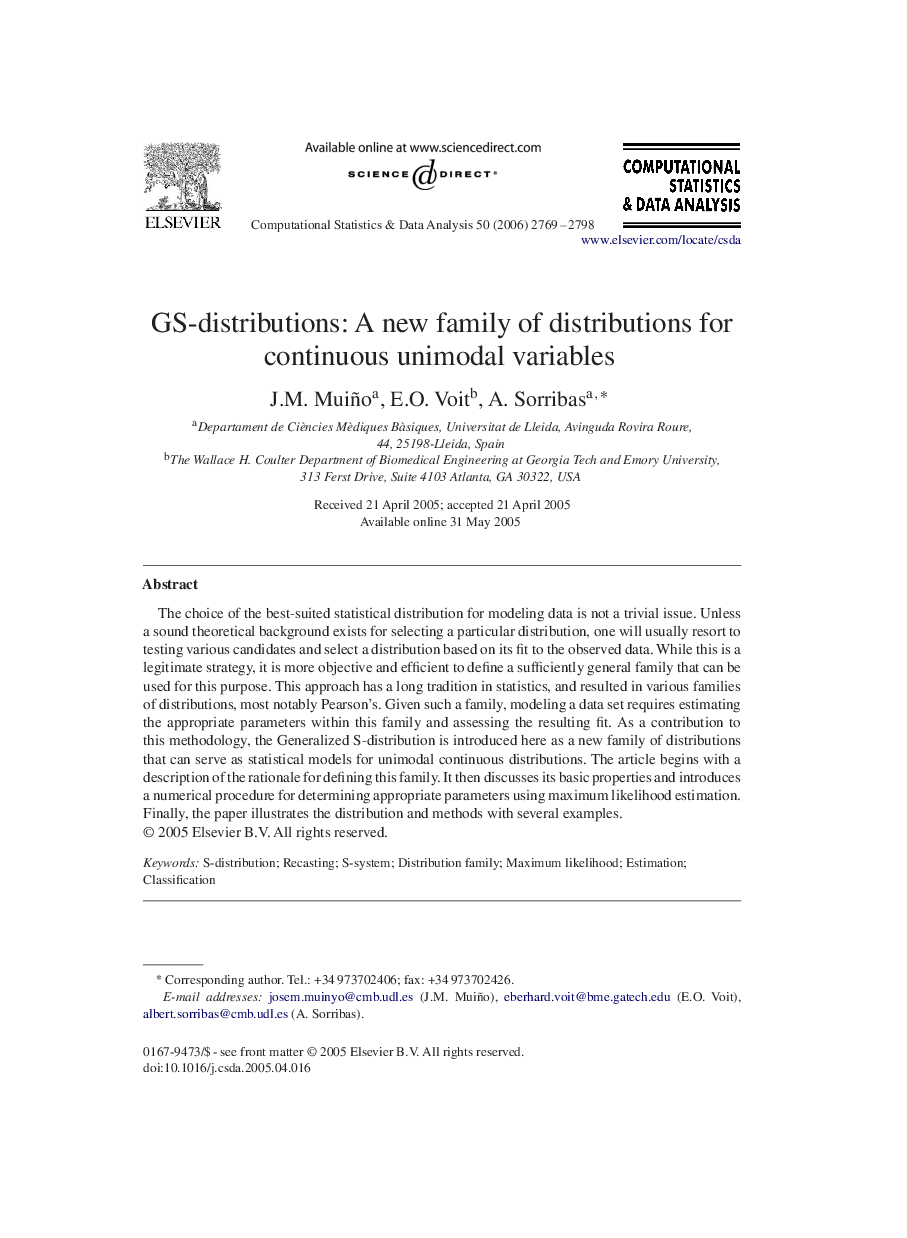| Article ID | Journal | Published Year | Pages | File Type |
|---|---|---|---|---|
| 416224 | Computational Statistics & Data Analysis | 2006 | 30 Pages |
The choice of the best-suited statistical distribution for modeling data is not a trivial issue. Unless a sound theoretical background exists for selecting a particular distribution, one will usually resort to testing various candidates and select a distribution based on its fit to the observed data. While this is a legitimate strategy, it is more objective and efficient to define a sufficiently general family that can be used for this purpose. This approach has a long tradition in statistics, and resulted in various families of distributions, most notably Pearson's. Given such a family, modeling a data set requires estimating the appropriate parameters within this family and assessing the resulting fit. As a contribution to this methodology, the Generalized S-distribution is introduced here as a new family of distributions that can serve as statistical models for unimodal continuous distributions. The article begins with a description of the rationale for defining this family. It then discusses its basic properties and introduces a numerical procedure for determining appropriate parameters using maximum likelihood estimation. Finally, the paper illustrates the distribution and methods with several examples.
